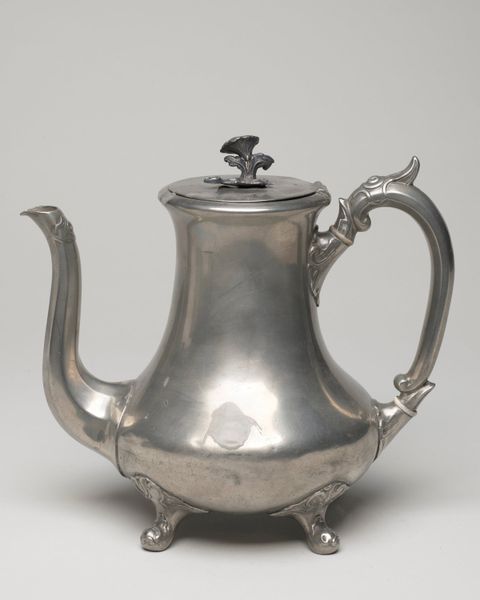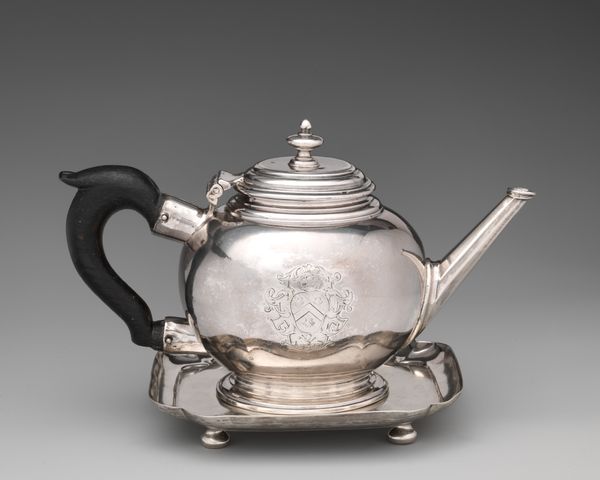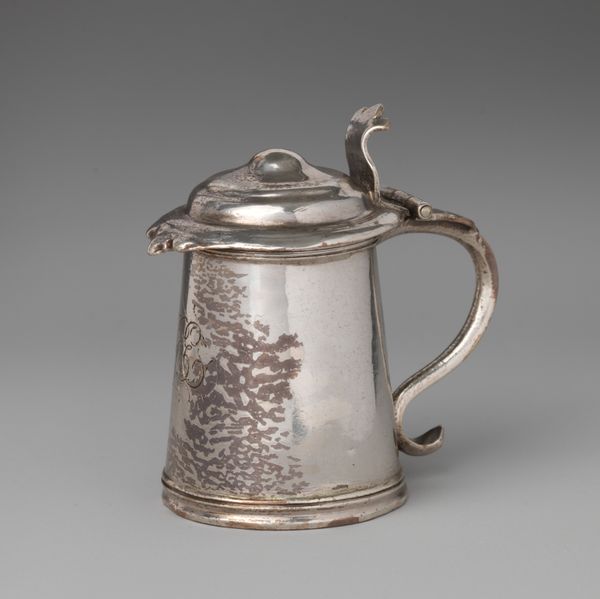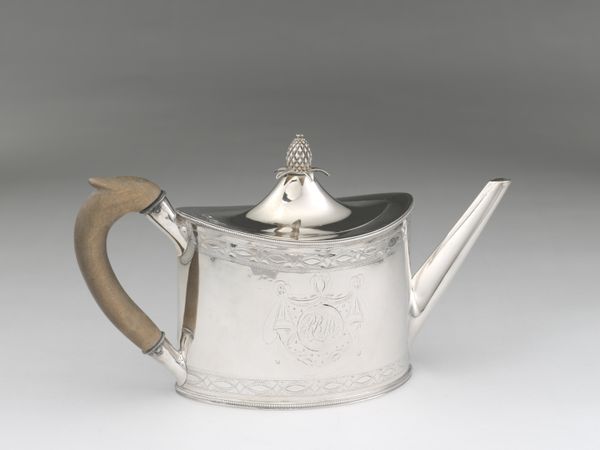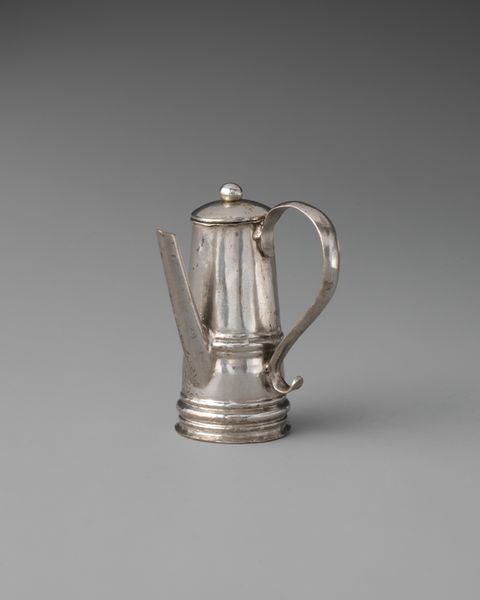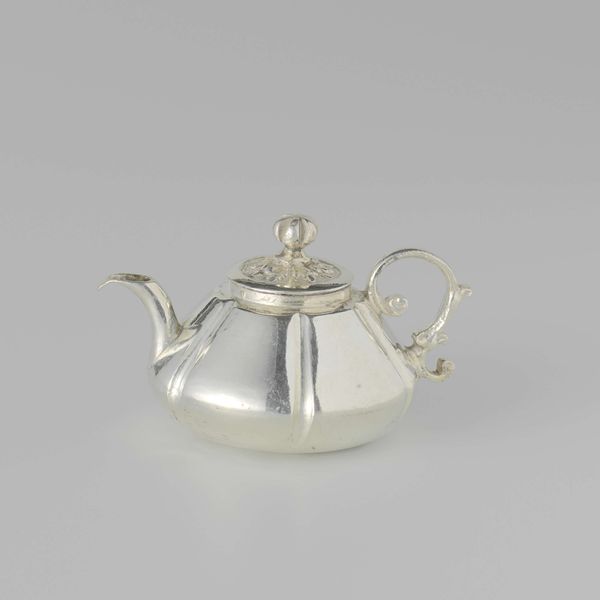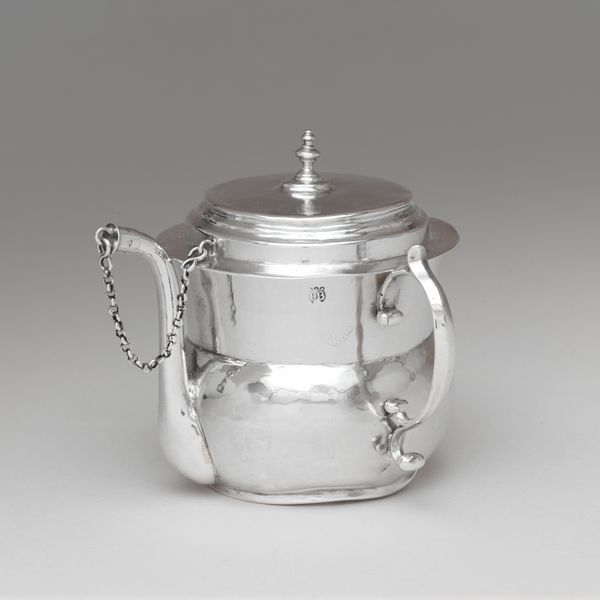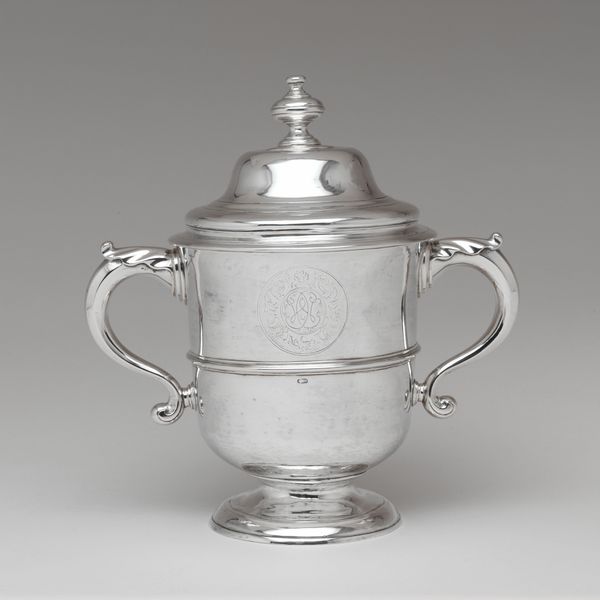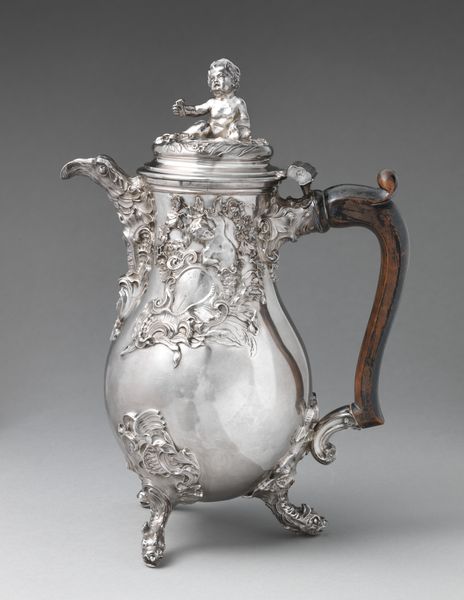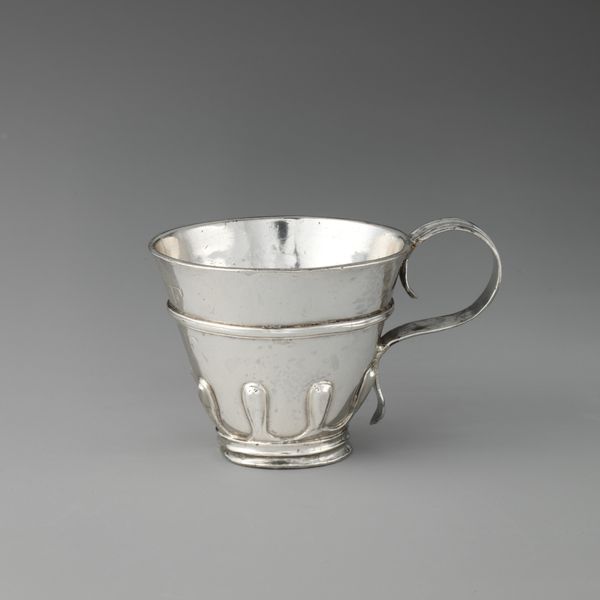
metal
#
baroque
#
metal
#
united-states
#
decorative-art
#
product render
Dimensions: Overall: 9 5/8 x 8 3/8 in. (24.4 x 21.3 cm); 25 oz. 16 dwt. (802.8 g) Base: Diam. 4 7/16 in. (11.3 cm) Lip: Diam. 2 3/4 in. (7 cm)
Copyright: Public Domain
This coffeepot was created by Charles Le Roux in the 18th century, made primarily from silver, with a wooden handle. Silver objects like this were raised and shaped through labor-intensive processes. First, the silver would have been melted and cast into ingots, then hammered into thin sheets. The body of the coffeepot was likely raised from a single sheet, using hammers and stakes to gradually form its curved shape. The spout, handle sockets, and other elements were made separately and then soldered together. The wood handle would have been carved and fitted to the silver mounts. The coffeepot reflects social and economic status, as silver was a precious material. Owning such an object signaled wealth and refinement, placing its owner within a privileged class. The techniques used to create this coffeepot were part of a long lineage of silversmithing, a craft that required years of apprenticeship. Appreciating objects like this requires us to consider not only their aesthetic qualities but also the social context of their making and use.
Comments
No comments
Be the first to comment and join the conversation on the ultimate creative platform.
